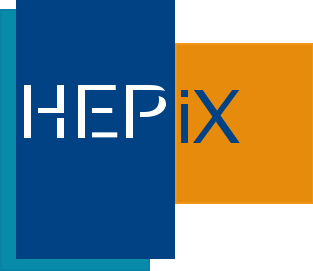The IT-Storage group at CERN is responsible for the operations and the development of the infrastructure to accommodate all the storage requirements from the physics data generated by LHC and non-LHC experiments to the personnel users’ files.
This presentation will give an overview of the solutions operated by the group, current and future developments, highlighting the group strategy to...
EOS, the high-performance CERN IT distributed storage for High-Energy Physics provides now more than 160PB of disks and supports several work-flows from data-taking and reconstruction to physics analysis. With the next storage delivery the system will grow above the 250PB mark. EOS provide as well “sync and share” capabilities to more than 9k users for administrative, scientific and...
Network-attached online storage, aka cloud storage, is a very popular form
of storage service provided by many commercial vendors. Providers include
Dropbox, Box, Google Drive, MS One Drive and Amazon Cloud Drive. All
have similar capabilities, providing users with quota space and custom
applications to transfer data between local sites and cloud storage. In
addition, all have well designed...
Rapid increase of data volume from the experiments running at the Large Hadron Collider (LHC) prompted physics computing community to evaluate new data handling and processing solutions. Russian grid sites and universities’ clusters scattered over a large area aim at the task of uniting their resources for future productive work, at the same time giving an opportunity to support large physics...
The CernVM File System (CernVM-FS) was developed to assist WLCG High Energy Physics (HEP) collaborations to deploy software on the worldwide distributed computing infrastructure used to run data processing applications. The technology is now firmly established as the primary method for distributing WLCG experiment software, and its use by other HEP and non-HEP communities has increased...
The new Ceph based storage system, Echo, is now accepting production data from LHC VOs. This talk gives an update on the work done while reaching this milestone. It will also cover other non-Echo Ceph related work at RAL.
Since 2012, 8 physics labs from Orsay/Saclay work together to provide a efficient and resilient scientific computing infrastructure. After building shared hosting facilities, this year, the 8 labs IT submitted a project to build a distributed data infrastructure based on Ceph technology that got funded at the end of 2016. The objective is to deploy on 3 sites, connected with a 100G network, 1...
This is a whistle-stop tour of some of the new approaches and technologies that enables companies to derive insight from their data, both today and into the future. It compares the progress of SSD and HDD, and maps out how HDD can stay on the
aerial density curve for the foreseeable future, up to 100TB per device.
Technology touched on will be Dual-Actuator drives, Helium, Two-Dimensional...
